2 Chronicles 4 meaning explained in AI Summary
2 Chronicles Chapter 4 details the construction and furnishing of the Temple built by King Solomon.
1. The Bronze Altar: Solomon commissions a massive bronze altar (20 cubits square and 10 cubits high) for burnt offerings. It's so large that sacrifices have to be performed on a platform built beside it.
2. The "Sea" of Bronze: A huge bronze basin called "the Sea" is created, resting on 12 bronze oxen. This basin, likely used for priestly washing, holds an immense amount of water (3,000 baths, roughly 17,500 gallons).
3. The Ten Bronze Stands and Basins: Ten smaller bronze stands, each with a matching basin, are made. These are placed around the Temple courtyard, five on each side, and are used to wash the sacrifices.
4. Other Temple Furnishings: The chapter lists other items made for the Temple, all from polished bronze: pots, shovels, basins, and other utensils.
5. Hiram's Craftsmanship: The chapter emphasizes that all these bronze items were made by Hiram, a skilled craftsman sent by King Hiram of Tyre, highlighting the collaboration between the kingdoms.
6. Gold Overlay: While the chapter focuses on the bronze items, it mentions that Solomon also had gold items made for the Temple's interior, including the altar of incense.
Overall, 2 Chronicles 4 emphasizes the grandeur, opulence, and meticulous detail that went into furnishing the Temple, reflecting the importance of the building and the worship it housed.
2 Chronicles 4 bible study ai commentary
This chapter describes the magnificent and ornate furnishings Solomon created for the Temple. Moving from the large bronze items of the outer court to the precious gold articles of the inner sanctuary, the account emphasizes a superabundance of materials and divine design. Every object—the massive altar, the cleansing "Sea" and lavers, the brilliant lampstands, and the tables of bread—serves a specific liturgical function while also symbolically portraying the immense glory of God, His provision for atonement and purification, and the perfect order of His kingdom. It demonstrates a significant expansion in scale and grandeur from the Tabernacle, reflecting a new era of stability and national worship.
2 Chronicles 4 context
For the post-exilic community rebuilding their nation and temple, this detailed account of Solomon's original Temple served as a powerful source of inspiration and national identity. It reminded them of their glorious heritage and God's covenant faithfulness, motivating them in their more modest reconstruction efforts. The use of a craftsman and materials from Tyre (a Gentile nation) subtly showed God's sovereignty over all peoples, foreshadowing the eventual inclusion of the nations in His plan of salvation—a relevant theme for a community now living among other empires.
2 Chronicles 4:1
He made an altar of bronze, twenty cubits long, and twenty cubits broad, and ten cubits high.
In-depth-analysis
- Dimensions: At approximately 30x30x15 feet (9x9x4.5 meters), this altar of burnt offering was immense. It was a square platform, signifying stability and reaching the four corners of the earth.
- Scale Contrast: It dramatically dwarfs the Tabernacle's altar (Exodus 27:1), which was only 5x5x3 cubits. This enlargement signifies the increased scope of sacrifice for a settled, populous nation versus a wandering people. God's provision for atonement is shown to be more than sufficient.
- Material: Bronze was strong and could withstand the intense heat of the sacrificial fires, symbolizing divine judgment against sin, which the sacrifice absorbed.
- Location: It stood in the inner court, the first major item encountered, highlighting that access to God begins with atonement for sin.
Bible references
- Exodus 27:1-2: "...You shall make the altar of acacia wood, five cubits long and five cubits broad... and its height shall be three cubits." (Contrast with the smaller Tabernacle altar).
- Ezekiel 43:13-17: "...These are the measurements of the altar... this is the altar." (Vision of the future, even larger Temple altar).
- Hebrews 13:10: "We have an altar from which those who serve the tabernacle have no right to eat." (The Christian altar is Christ's sacrifice).
Cross references
2 Kin 16:14 (Ahaz moves it); Eze 9:2 (Vision of slaughter at the altar); Rev 6:9 (Souls under the altar).
2 Chronicles 4:2-5
Then he made the molten sea of ten cubits from brim to brim, round in compass, and the height thereof was five cubits, and a line of thirty cubits did compass it round about. And under it was the similitude of oxen, which did compass it round about, ten in a cubit, compassing the sea round about. Two rows of oxen were cast, when it was cast. It stood upon twelve oxen, three looking toward the north, and three looking toward the west, and three looking toward the south, and three looking toward the east: and the sea was set above upon them, and all their hinder parts were inward. And the thickness of it was an handbreadth, and the brim of it like the work of the brim of a cup, with flowers of lilies; and it received and held three thousand baths.
In-depth-analysis
- The "Sea" (yam): This was a colossal bronze basin, a laver for the priests to wash themselves before ministry (cf. 2 Chr 4:6). Its name evokes God's mastery over the chaotic waters of creation (Genesis 1), now tamed for divine purification.
- The Twelve Oxen: Oxen symbolize strength, servitude, and sacrifice. The twelve oxen represent the twelve tribes of Israel. Their outward-facing posture (toward the four cardinal directions) signifies Israel's intended priestly role and mission to the entire world.
- Dimensions & Capacity: It held an immense amount of water (approx. 12,000-15,000 gallons / 45,000 liters), emphasizing the abundant provision for cleansing. The mention of 10 cubits diameter and 30 cubits circumference reflects an ancient approximation of pi (π) or a measurement of the inner versus outer rim, not a mathematical error.
- Lily Flower Brim: Lilies often symbolize purity, beauty, and new life. This decorative element on a vessel for cleansing reinforces its purpose.
Bible references
- 1 Kings 7:23-26: "Then he made the molten sea..." (Parallel account with minor differences in capacity - 2,000 baths).
- Exodus 30:18-21: "You shall also make a basin of bronze, with its stand of bronze, for washing..." (The far simpler Tabernacle laver).
- Revelation 4:6: "and before the throne there was as it were a sea of glass, like crystal." (The heavenly reality of perfect purity).
- Titus 3:5: "...he saved us, not because of works done by us... but according to his own mercy, by the washing of regeneration..." (Spiritual fulfillment of ritual washing).
Cross references
Jer 52:17 (Babylonians destroy it); Eph 5:26 (Washed by water of the Word); Heb 10:22 (Hearts sprinkled clean); John 13:8-10 (Peter needing to be washed).
Polemics
The "Sea" (yam) stands in direct polemical opposition to the chaotic sea deities of Canaanite and Mesopotamian mythology (e.g., Yam, Tiamat). In the Temple, Yahweh has subdued the 'sea,' transforming it from a symbol of chaos into a source of holy purification. The intricate, divinely mandated design contrasts sharply with the idols and ritual objects of surrounding pagan cults.
2 Chronicles 4:6
He made also ten lavers, and put five on the right hand, and five on the left, to wash in them: such things as they offered for the burnt offering they washed in them; but the sea was for the priests to wash in.
In-depth-analysis
- Dual Cleansing System: A clear distinction is made. The "Sea" was for purifying the priests (the agents of sacrifice), while the ten lavers were for purifying the sacrifices themselves.
- Holiness Required: This highlights that both the offerer (represented by the priest) and the offering must be made clean and holy to be acceptable to God. Nothing impure can be brought into His service.
- Number Ten: Ten signifies completeness and divine order. The presence of ten lavers underscores the complete and sufficient provision for making every part of the sacrifice acceptable.
Bible references
- Leviticus 1:9: "its entrails and its legs he shall wash with water..." (The basis in the Law for washing the offering).
- Hebrews 9:14: "...how much more will the blood of Christ... purify our conscience from dead works to serve the living God." (Christ's blood as the ultimate purifier of both person and works).
Cross references
1 Pet 1:18-19 (Redeemed by precious blood); Exo 29:17 (Washing the ram).
2 Chronicles 4:7-8
And he made ten candlesticks of gold according to their form, and set them in the temple, five on the right hand, and five on the left. He made also ten tables, and placed them in the temple, five on the right side, and five on the left. And he made an hundred basons of gold.
In-depth-analysis
- Multiplication of Light: The Temple had ten golden lampstands (menorot), a tenfold increase from the single lampstand in the Tabernacle (Exodus 25:31-40). This symbolizes the superabundant spiritual light, truth, and presence of God filling His permanent house.
- Multiplication of Provision: Ten tables replaced the one Table of Showbread (Exodus 25:23-30). This represents the fullness of God's spiritual provision and fellowship for His people, embodied in the "Bread of the Presence."
- Symmetry: The arrangement of "five on the right... and five on the left" creates a sense of divine order, balance, and majesty within the Holy Place.
- Material: Gold, the most precious metal, was used for these items inside the Holy Place, signifying their proximity to God's glory, their purity, and divine nature.
Bible references
- Exodus 25:31: "You shall make a lampstand of pure gold..." (The singular Tabernacle lampstand).
- Revelation 1:12, 20: "...I saw seven golden lampstands, and... the seven lampstands are the seven churches." (Lampstands as symbols of God's people, the Church).
- John 8:12: "Again Jesus spoke to them, saying, “I am the light of the world.”" (Christ as the true, ultimate light).
- John 6:35: "Jesus said to them, “I am the bread of life; whoever comes to me shall not hunger..."" (Christ as the true bread from heaven).
Cross references
Lev 24:5-9 (Bread of the Presence law); Zec 4:2 (Vision of one lampstand); Heb 9:2 (Tabernacle's lampstand and table).
2 Chronicles 4:9-11
Furthermore he made the court of the priests, and the great court, and doors for the court, and overlaid the doors of them with bronze. And he set the sea on the right side of the house eastward, over against the south. And Huram made the pots, and the shovels, and the basons. And Huram finished the work that he was to make for king Solomon for the house of God;
In-depth-analysis
- Sacred Spaces: The creation of separate courts—one for priests and a "great court" for the people—established a clear architectural separation of sacred space. This system guided worshippers progressively toward the divine presence.
- Hiram's Work: The narrative explicitly credits Huram (or Hiram), the master craftsman from Tyre, with completing this massive undertaking of bronze work. His half-Israelite, half-Gentile heritage is significant (1 Kings 7:14).
- Completion: Verse 11 marks a key transition, stating that Huram "finished the work." The Chronicler emphasizes the successful completion of the project according to the divine plan given to David and executed by Solomon.
Bible references
- 1 Kings 7:13-14: "And King Solomon sent and brought Hiram from Tyre. He was the son of a widow of the tribe of Naphtali, and his father was a man of Tyre..." (Hiram's mixed heritage, symbolizing Gentile skill used for God's house).
- Ephesians 2:19-22: "...you are no longer strangers and aliens... built on the foundation of the apostles and prophets, Christ Jesus himself being the cornerstone..." (The NT fulfillment of Jew and Gentile forming one house for God).
Cross references
Eze 44:17-19 (Priestly court rules); Exo 31:2-6 (God equipping Bezalel and Oholiab with skill).
2 Chronicles 4:12-18
To wit, the two pillars, and the pommels, and the chapiters which were on the top of the two pillars, and the two wreaths to cover the two pommels of the chapiters which were on the top of the pillars; And four hundred pomegranates on the two wreaths; two rows of pomegranates on each wreath, to cover the two pommels of the chapiters which were upon the pillars. He made also bases, and lavers made he upon the bases; One sea, and twelve oxen under it. The pots also, and the shovels, and the fleshhooks, and all their instruments, did Huram his father make to king Solomon for the house of the Lord of bright bronze. In the plain of the Jordan did the king cast them, in the clay ground between Succoth and Zeredathah. Thus Solomon made all these vessels in great abundance: for the weight of the bronze could not be found out.
In-depth-analysis
- Comprehensive List: This section provides a detailed summary inventory of all the bronze items Hiram crafted, from the massive pillars (Jachin and Boaz) to the smallest utensils like fleshhooks.
- Abundance: The key takeaway is the sheer quantity of bronze. "The weight... could not be found out" emphasizes the lavishness and extravagance of Solomon's provision for God's house, reflecting the wealth and peace of his kingdom.
- Bright Bronze: The description of "bright" or "polished" bronze speaks to the magnificent, shining appearance of the courtyard items, reflecting the sun and the glory of the entire structure.
- Casting Location: The items were cast in the Jordan valley clay, a practical detail showing advanced metallurgical knowledge and logistical planning to keep the industrial process away from the sacred site in Jerusalem.
Bible references
- 1 Kings 7:45-47: "...all these vessels that Hiram made for King Solomon... were of burnished bronze. In the plain of the Jordan the king cast them..." (Parallel account).
- Genesis 13:10: "...Lot lifted up his eyes and saw that the Jordan Valley was well watered everywhere..." (Description of the fertile plain used for casting).
Cross references
2 Chr 3:15-17 (Initial description of the pillars); Jer 52:20-23 (Pillars taken by Babylon).
2 Chronicles 4:19-22
And Solomon made all the vessels that were for the house of God, the golden altar also, and the tables whereon the shewbread was set; Moreover the candlesticks with their lamps, that they should burn after the manner before the oracle, of pure gold; And the flowers, and the lamps, and the tongs, made he of gold, and that perfect gold; And the snuffers, and the basons, and the spoons, and the censers, of pure gold: and the entry of the house, the inner doors thereof for the most holy place, and the doors of the house of the temple, were of gold.
In-depth-analysis
- Shift to Gold: The narrative deliberately moves from the bronze items of the court to the golden implements inside the Holy Place and Most Holy Place. This reflects a progression toward greater holiness and proximity to God's presence.
- "Perfect Gold": The repeated emphasis on "pure gold" and "perfect gold" (zahav sagur - refined gold) underscores the absolute purity and divine value of the objects in God's immediate presence. No alloy or imperfection was acceptable.
- Altar of Incense: The "golden altar" was for burning incense, which symbolized the prayers of God's people ascending to Him.
- Golden Doors: Even the hinges and doors leading into the most sacred spaces were overlaid with gold, signifying that every point of transition into God's presence is holy.
Bible references
- Exodus 30:1-3: "You shall make an altar to burn incense on... you shall overlay it with pure gold..." (The law for the Tabernacle's incense altar).
- Revelation 5:8: "...each holding a harp, and golden bowls full of incense, which are the prayers of the saints." (The heavenly function of incense).
- Hebrews 9:23-24: "Thus it was necessary for the copies of the heavenly things to be purified with these rites, but the heavenly things themselves with better sacrifices than these." (All earthly temple items were copies of a heavenly reality).
Cross references
Exo 37:25-28 (Tabernacle's incense altar construction); Rev 8:3-4 (Angel at the heavenly golden altar).
2 Chronicles chapter 4 analysis
- From Tabernacle to Temple: The chapter highlights a monumental shift. The mobile, functional items of the Tabernacle are replaced by permanent, immense, and ornate furnishings. The multiplication of key items (lavers, tables, lampstands) from one to ten symbolizes a new era of fullness, completeness, and superabundant divine provision for a settled kingdom.
- Christological Fulfillment: Each piece of furniture is a type that finds its antitype, or ultimate fulfillment, in Christ. The altar is His sacrifice; the Sea is His cleansing power; the Bread is His life-giving body; the Light is His divine truth; and the incense altar is His perpetual intercession for the saints.
- Jew & Gentile Together: The central role of Hiram, a half-Gentile craftsman from Tyre using foreign materials to build God's house, is a profound theological statement. It demonstrates that God's plan of redemption has always included the nations, a mystery fully revealed in the New Testament Church, where Jews and Gentiles are built together into one "holy temple in the Lord" (Eph 2:21).
- Progression of Holiness: The strategic use of materials—bronze for the outer court (symbolizing judgment on sin) and pure gold for the sanctuary (symbolizing divine glory and purity)—architecturally maps a journey of increasing holiness as one moves closer to the Most Holy Place, where God dwells.
2 Chronicles 4 summary
Solomon commissions and completes the interior furnishings for the Temple, crafting a massive bronze altar, a "Molten Sea" on twelve oxen, ten lavers, ten golden lampstands, and ten tables. The account moves from the bronze work of the outer court to the pure gold articles of the inner sanctuary, highlighting the immense scale and lavished resources that signify the superabundant provision for atonement, cleansing, and fellowship in God's glorious presence.
2 Chronicles 4 AI Image Audio and Video
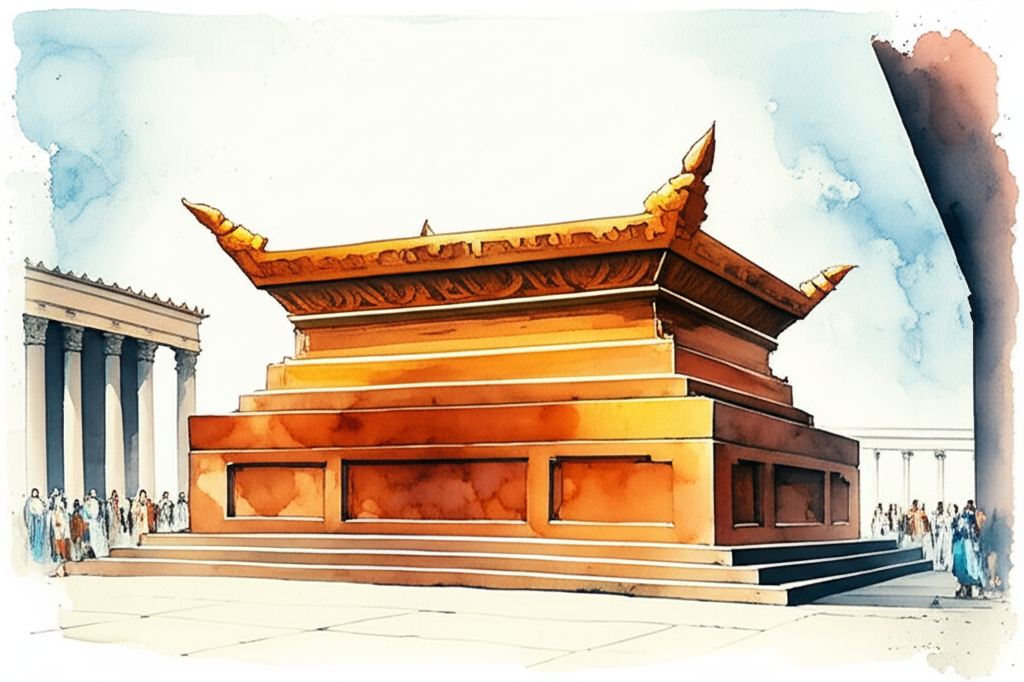
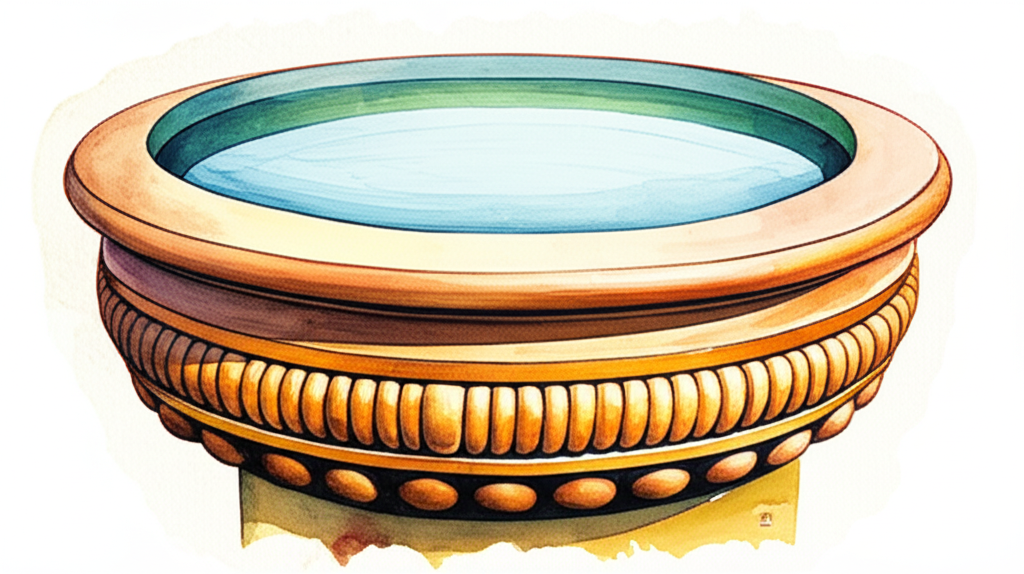
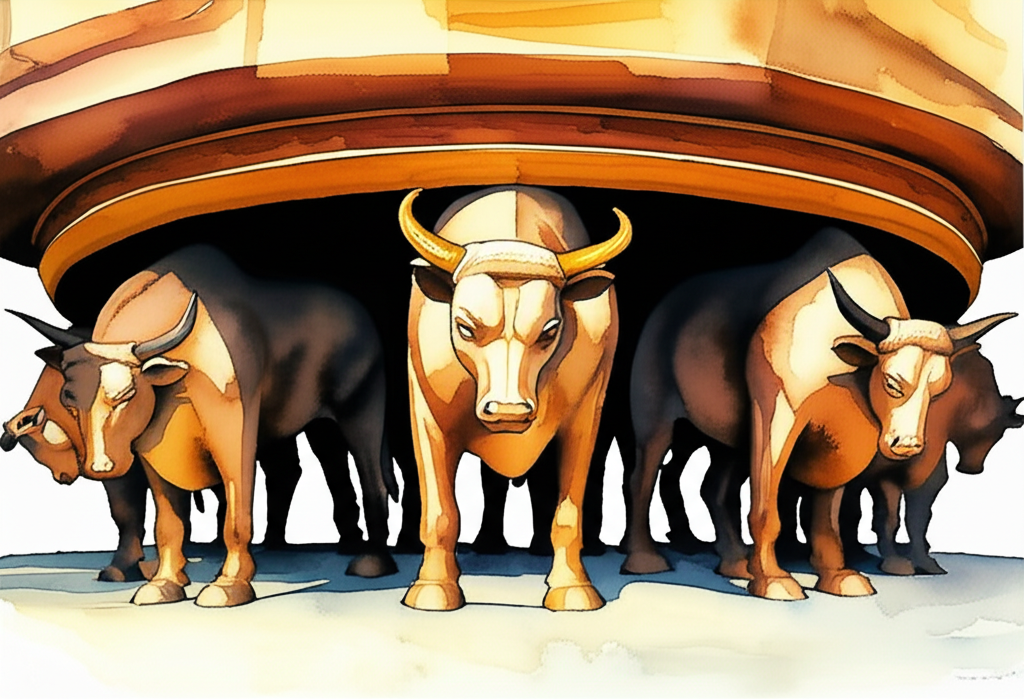


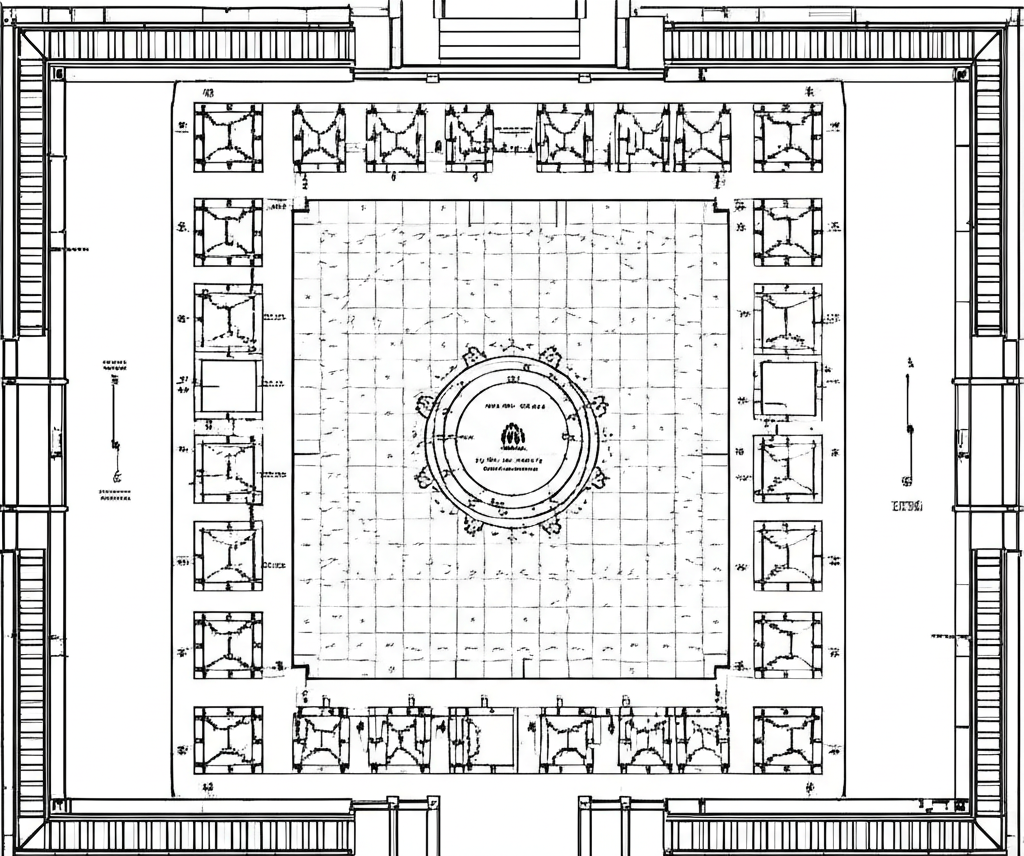
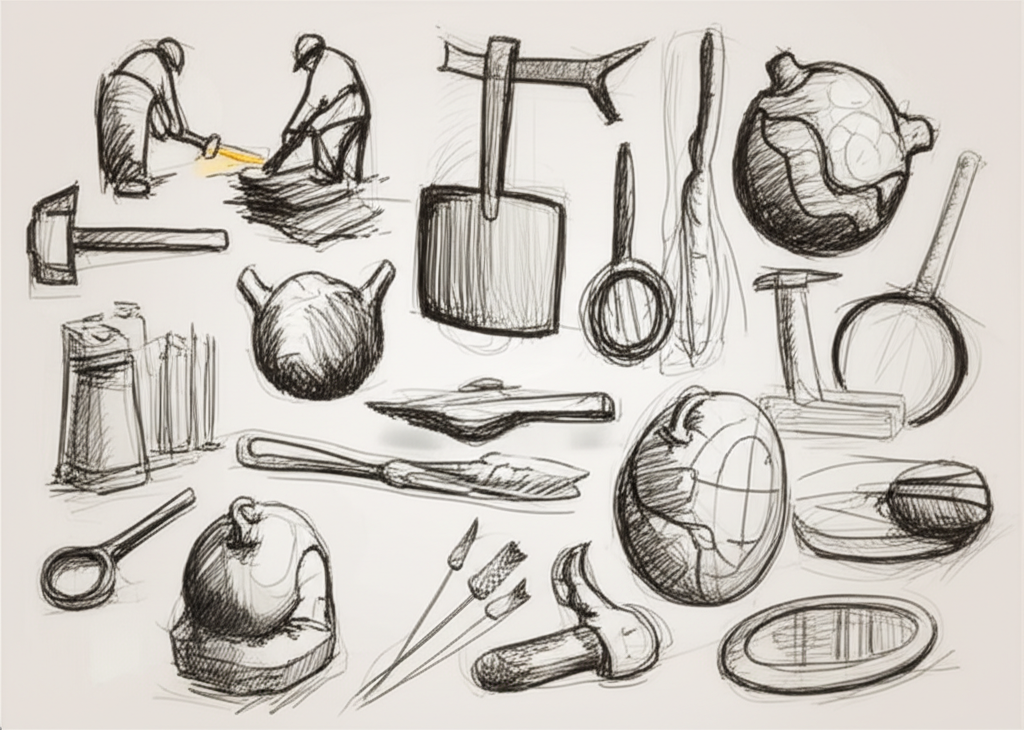
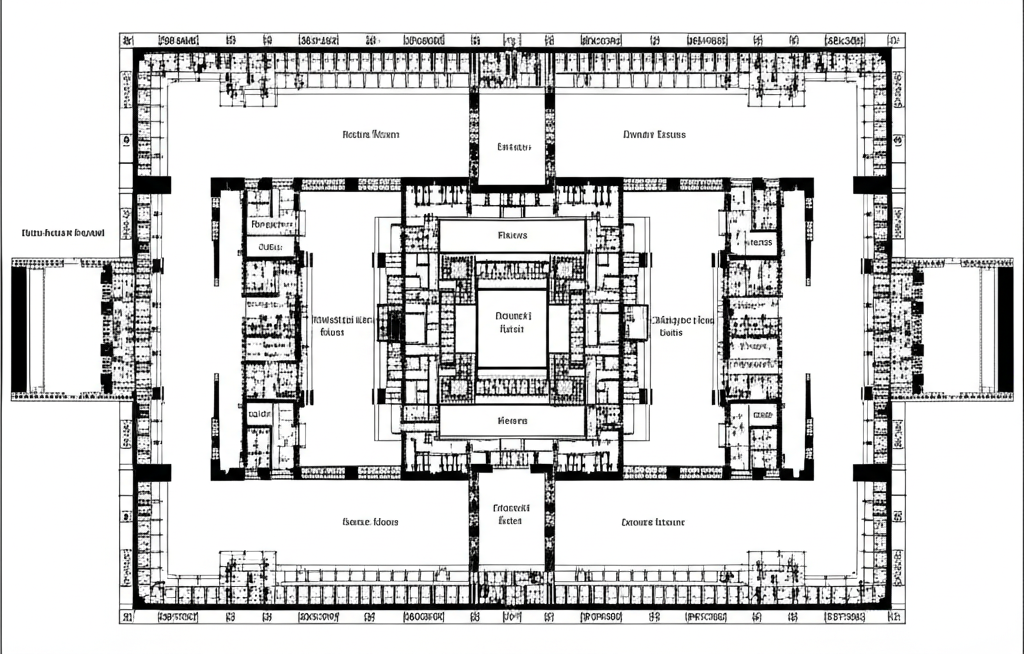
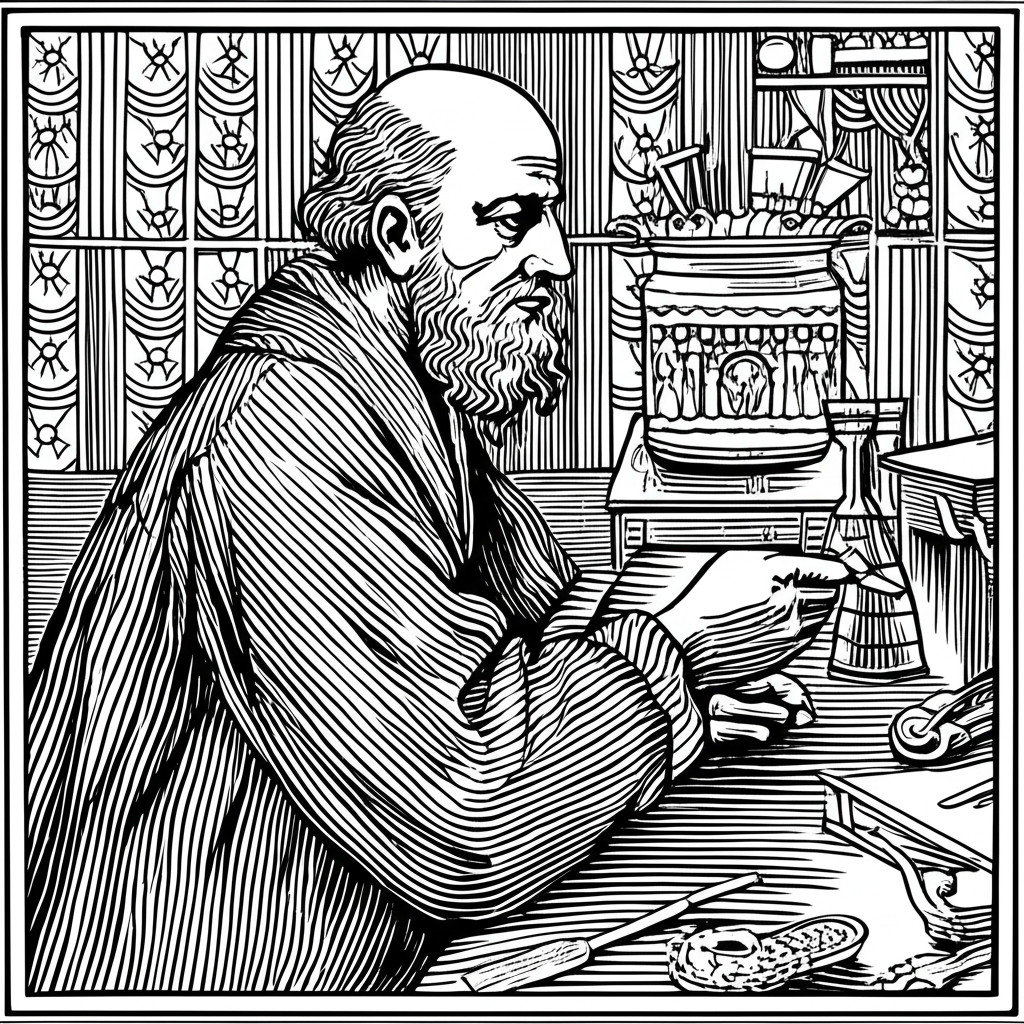
2 Chronicles chapter 4 kjv
- 1 Moreover he made an altar of brass, twenty cubits the length thereof, and twenty cubits the breadth thereof, and ten cubits the height thereof.
- 2 Also he made a molten sea of ten cubits from brim to brim, round in compass, and five cubits the height thereof; and a line of thirty cubits did compass it round about.
- 3 And under it was the similitude of oxen, which did compass it round about: ten in a cubit, compassing the sea round about. Two rows of oxen were cast, when it was cast.
- 4 It stood upon twelve oxen, three looking toward the north, and three looking toward the west, and three looking toward the south, and three looking toward the east: and the sea was set above upon them, and all their hinder parts were inward.
- 5 And the thickness of it was an handbreadth, and the brim of it like the work of the brim of a cup, with flowers of lilies; and it received and held three thousand baths.
- 6 He made also ten lavers, and put five on the right hand, and five on the left, to wash in them: such things as they offered for the burnt offering they washed in them; but the sea was for the priests to wash in.
- 7 And he made ten candlesticks of gold according to their form, and set them in the temple, five on the right hand, and five on the left.
- 8 He made also ten tables, and placed them in the temple, five on the right side, and five on the left. And he made an hundred basins of gold.
- 9 Furthermore he made the court of the priests, and the great court, and doors for the court, and overlaid the doors of them with brass.
- 10 And he set the sea on the right side of the east end, over against the south.
- 11 And Huram made the pots, and the shovels, and the basins. And Huram finished the work that he was to make for king Solomon for the house of God;
- 12 To wit, the two pillars, and the pommels, and the chapiters which were on the top of the two pillars, and the two wreaths to cover the two pommels of the chapiters which were on the top of the pillars;
- 13 And four hundred pomegranates on the two wreaths; two rows of pomegranates on each wreath, to cover the two pommels of the chapiters which were upon the pillars.
- 14 He made also bases, and lavers made he upon the bases;
- 15 One sea, and twelve oxen under it.
- 16 The pots also, and the shovels, and the fleshhooks, and all their instruments, did Huram his father make to king Solomon for the house of the LORD of bright brass.
- 17 In the plain of Jordan did the king cast them, in the clay ground between Succoth and Zeredathah.
- 18 Thus Solomon made all these vessels in great abundance: for the weight of the brass could not be found out.
- 19 And Solomon made all the vessels that were for the house of God, the golden altar also, and the tables whereon the shewbread was set;
- 20 Moreover the candlesticks with their lamps, that they should burn after the manner before the oracle, of pure gold;
- 21 And the flowers, and the lamps, and the tongs, made he of gold, and that perfect gold;
- 22 And the snuffers, and the basins, and the spoons, and the censers, of pure gold: and the entry of the house, the inner doors thereof for the most holy place, and the doors of the house of the temple, were of gold.
2 Chronicles chapter 4 nkjv
- 1 Moreover he made a bronze altar: twenty cubits was its length, twenty cubits its width, and ten cubits its height.
- 2 Then he made the Sea of cast bronze, ten cubits from one brim to the other; it was completely round. Its height was five cubits, and a line of thirty cubits measured its circumference.
- 3 And under it was the likeness of oxen encircling it all around, ten to a cubit, all the way around the Sea. The oxen were cast in two rows, when it was cast.
- 4 It stood on twelve oxen: three looking toward the north, three looking toward the west, three looking toward the south, and three looking toward the east; the Sea was set upon them, and all their back parts pointed inward.
- 5 It was a handbreadth thick; and its brim was shaped like the brim of a cup, like a lily blossom. It contained three thousand baths.
- 6 He also made ten lavers, and put five on the right side and five on the left, to wash in them; such things as they offered for the burnt offering they would wash in them, but the Sea was for the priests to wash in.
- 7 And he made ten lampstands of gold according to their design, and set them in the temple, five on the right side and five on the left.
- 8 He also made ten tables, and placed them in the temple, five on the right side and five on the left. And he made one hundred bowls of gold.
- 9 Furthermore he made the court of the priests, and the great court and doors for the court; and he overlaid these doors with bronze.
- 10 He set the Sea on the right side, toward the southeast.
- 11 Then Huram made the pots and the shovels and the bowls. So Huram finished doing the work that he was to do for King Solomon for the house of God:
- 12 the two pillars and the bowl-shaped capitals that were on top of the two pillars; the two networks covering the two bowl-shaped capitals which were on top of the pillars;
- 13 four hundred pomegranates for the two networks (two rows of pomegranates for each network, to cover the two bowl-shaped capitals that were on the pillars);
- 14 he also made carts and the lavers on the carts;
- 15 one Sea and twelve oxen under it;
- 16 also the pots, the shovels, the forks?and all their articles Huram his master craftsman made of burnished bronze for King Solomon for the house of the LORD.
- 17 In the plain of Jordan the king had them cast in clay molds, between Succoth and Zeredah.
- 18 And Solomon had all these articles made in such great abundance that the weight of the bronze was not determined.
- 19 Thus Solomon had all the furnishings made for the house of God: the altar of gold and the tables on which was the showbread;
- 20 the lampstands with their lamps of pure gold, to burn in the prescribed manner in front of the inner sanctuary,
- 21 with the flowers and the lamps and the wick-trimmers of gold, of purest gold;
- 22 the trimmers, the bowls, the ladles, and the censers of pure gold. As for the entry of the sanctuary, its inner doors to the Most Holy Place, and the doors of the main hall of the temple, were gold.
2 Chronicles chapter 4 niv
- 1 He made a bronze altar twenty cubits long, twenty cubits wide and ten cubits high.
- 2 He made the Sea of cast metal, circular in shape, measuring ten cubits from rim to rim and five cubits high. It took a line of thirty cubits to measure around it.
- 3 Below the rim, figures of bulls encircled it?ten to a cubit. The bulls were cast in two rows in one piece with the Sea.
- 4 The Sea stood on twelve bulls, three facing north, three facing west, three facing south and three facing east. The Sea rested on top of them, and their hindquarters were toward the center.
- 5 It was a handbreadth in thickness, and its rim was like the rim of a cup, like a lily blossom. It held three thousand baths.
- 6 He then made ten basins for washing and placed five on the south side and five on the north. In them the things to be used for the burnt offerings were rinsed, but the Sea was to be used by the priests for washing.
- 7 He made ten gold lampstands according to the specifications for them and placed them in the temple, five on the south side and five on the north.
- 8 He made ten tables and placed them in the temple, five on the south side and five on the north. He also made a hundred gold sprinkling bowls.
- 9 He made the courtyard of the priests, and the large court and the doors for the court, and overlaid the doors with bronze.
- 10 He placed the Sea on the south side, at the southeast corner.
- 11 And Huram also made the pots and shovels and sprinkling bowls. So Huram finished the work he had undertaken for King Solomon in the temple of God:
- 12 the two pillars; the two bowl-shaped capitals on top of the pillars; the two sets of network decorating the two bowl-shaped capitals on top of the pillars;
- 13 the four hundred pomegranates for the two sets of network (two rows of pomegranates for each network, decorating the bowl-shaped capitals on top of the pillars);
- 14 the stands with their basins;
- 15 the Sea and the twelve bulls under it;
- 16 the pots, shovels, meat forks and all related articles. All the objects that Huram-Abi made for King Solomon for the temple of the LORD were of polished bronze.
- 17 The king had them cast in clay molds in the plain of the Jordan between Sukkoth and Zarethan.
- 18 All these things that Solomon made amounted to so much that the weight of the bronze could not be calculated.
- 19 Solomon also made all the furnishings that were in God's temple: the golden altar; the tables on which was the bread of the Presence;
- 20 the lampstands of pure gold with their lamps, to burn in front of the inner sanctuary as prescribed;
- 21 the gold floral work and lamps and tongs (they were solid gold);
- 22 the pure gold wick trimmers, sprinkling bowls, dishes and censers; and the gold doors of the temple: the inner doors to the Most Holy Place and the doors of the main hall.
2 Chronicles chapter 4 esv
- 1 He made an altar of bronze, twenty cubits long and twenty cubits wide and ten cubits high.
- 2 Then he made the sea of cast metal. It was round, ten cubits from brim to brim, and five cubits high, and a line of thirty cubits measured its circumference.
- 3 Under it were figures of gourds, for ten cubits, compassing the sea all around. The gourds were in two rows, cast with it when it was cast.
- 4 It stood on twelve oxen, three facing north, three facing west, three facing south, and three facing east. The sea was set on them, and all their rear parts were inward.
- 5 Its thickness was a handbreadth. And its brim was made like the brim of a cup, like the flower of a lily. It held 3,000 baths.
- 6 He also made ten basins in which to wash, and set five on the south side, and five on the north side. In these they were to rinse off what was used for the burnt offering, and the sea was for the priests to wash in.
- 7 And he made ten golden lampstands as prescribed, and set them in the temple, five on the south side and five on the north.
- 8 He also made ten tables and placed them in the temple, five on the south side and five on the north. And he made a hundred basins of gold.
- 9 He made the court of the priests and the great court and doors for the court and overlaid their doors with bronze.
- 10 And he set the sea at the southeast corner of the house.
- 11 Hiram also made the pots, the shovels, and the basins. So Hiram finished the work that he did for King Solomon on the house of God:
- 12 the two pillars, the bowls, and the two capitals on the top of the pillars; and the two latticeworks to cover the two bowls of the capitals that were on the top of the pillars;
- 13 and the 400 pomegranates for the two latticeworks, two rows of pomegranates for each latticework, to cover the two bowls of the capitals that were on the pillars.
- 14 He made the stands also, and the basins on the stands,
- 15 and the one sea, and the twelve oxen underneath it.
- 16 The pots, the shovels, the forks, and all the equipment for these Huram-abi made of burnished bronze for King Solomon for the house of the LORD.
- 17 In the plain of the Jordan the king cast them, in the clay ground between Succoth and Zeredah.
- 18 Solomon made all these things in great quantities, for the weight of the bronze was not sought.
- 19 So Solomon made all the vessels that were in the house of God: the golden altar, the tables for the bread of the Presence,
- 20 the lampstands and their lamps of pure gold to burn before the inner sanctuary, as prescribed;
- 21 the flowers, the lamps, and the tongs, of purest gold;
- 22 the snuffers, basins, dishes for incense, and fire pans, of pure gold, and the sockets of the temple, for the inner doors to the Most Holy Place and for the doors of the nave of the temple were of gold.
2 Chronicles chapter 4 nlt
- 1 Solomon also made a bronze altar 30 feet long, 30 feet wide, and 15 feet high.
- 2 Then he cast a great round basin, 15 feet across from rim to rim, called the Sea. It was 7 1?2 feet deep and about 45 feet in circumference.
- 3 It was encircled just below its rim by two rows of figures that resembled oxen. There were about six oxen per foot all the way around, and they were cast as part of the basin.
- 4 The Sea was placed on a base of twelve bronze oxen, all facing outward. Three faced north, three faced west, three faced south, and three faced east, and the Sea rested on them.
- 5 The walls of the Sea were about three inches thick, and its rim flared out like a cup and resembled a water lily blossom. It could hold about 16,500 gallons of water.
- 6 He also made ten smaller basins for washing the utensils for the burnt offerings. He set five on the south side and five on the north. But the priests washed themselves in the Sea.
- 7 He then cast ten gold lampstands according to the specifications that had been given, and he put them in the Temple. Five were placed against the south wall, and five were placed against the north wall.
- 8 He also built ten tables and placed them in the Temple, five along the south wall and five along the north wall. Then he molded 100 gold basins.
- 9 He then built a courtyard for the priests, and also the large outer courtyard. He made doors for the courtyard entrances and overlaid them with bronze.
- 10 The great bronze basin called the Sea was placed near the southeast corner of the Temple.
- 11 Huram-abi also made the necessary washbasins, shovels, and bowls. So at last Huram-abi completed everything King Solomon had assigned him to make for the Temple of God:
- 12 the two pillars;
the two bowl-shaped capitals on top of the pillars;
the two networks of interwoven chains that decorated the capitals; - 13 the 400 pomegranates that hung from the chains on the capitals (two rows of pomegranates for each of the chain networks that decorated the capitals on top of the pillars);
- 14 the water carts holding the basins;
- 15 the Sea and the twelve oxen under it;
- 16 the ash buckets, the shovels, the meat hooks, and all the related articles.
Huram-abi made all these things of burnished bronze for the Temple of the LORD, just as King Solomon had directed. - 17 The king had them cast in clay molds in the Jordan Valley between Succoth and Zarethan.
- 18 Solomon used such great quantities of bronze that its weight could not be determined.
- 19 Solomon also made all the furnishings for the Temple of God: the gold altar;
the tables for the Bread of the Presence; - 20 the lampstands and their lamps of solid gold, to burn in front of the Most Holy Place as prescribed;
- 21 the flower decorations, lamps, and tongs ? all of the purest gold;
- 22 the lamp snuffers, bowls, ladles, and incense burners ? all of solid gold;
the doors for the entrances to the Most Holy Place and the main room of the Temple, overlaid with gold.
- Bible Book of 2 Chronicles
- 1 Solomon Worships at Gibeon
- 2 Preparing to Build the Temple
- 3 Solomon Builds the Temple
- 4 The Temple's Furnishings
- 5 The Ark Brought to the Temple
- 6 Solomon Blesses the People
- 7 Shekinah glory of God
- 8 Solomon's Accomplishments
- 9 The Queen of Sheba
- 10 The Revolt Against Rehoboam
- 11 Rehoboam Secures His Kingdom
- 12 Egypt Plunders Jerusalem
- 13 Abijah Reigns in Judah
- 14 King Asa of Judah
- 15 Asa's Religious Reforms
- 16 Asa's Last Years
- 17 Jehoshaphat Reigns in Judah
- 18 Jehoshaphat Allies with Ahab
- 19 Jehoshaphat's Reforms
- 20 King Jehoshaphat's Prayer
- 21 Jehoram Reigns in Judah
- 22 Ahaziah Reigns in Judah
- 23 Joash Made King
- 24 King Joash Repairs the Temple
- 25 Amaziah Reigns in Judah
- 26 King Uzziah Reigns in Judah
- 27 Jotham Reigns in Judah
- 28 Ahaz Reigns in Judah
- 29 Hezekiah Reigns in Judah
- 30 Passover Celebrated
- 31 Hezekiah Organizes the Priests
- 32 Sennacherib Boasts Against the Lord
- 33 Manasseh Reigns in Judah
- 34 Josiah Reigns in Judah
- 35 Josiah Keeps the Passover
- 36 Judah's Decline